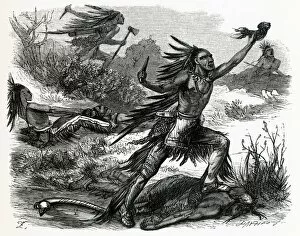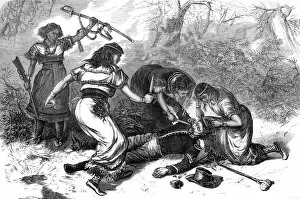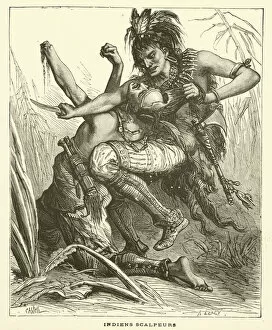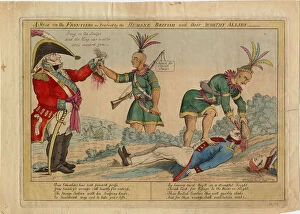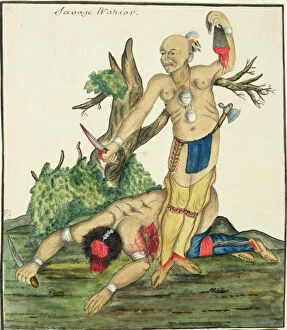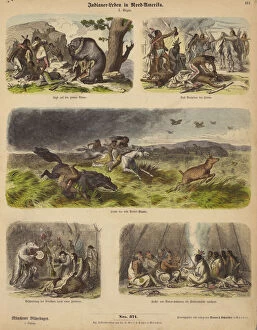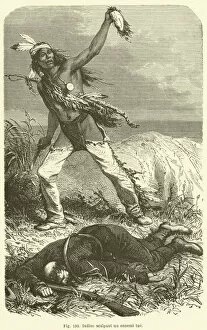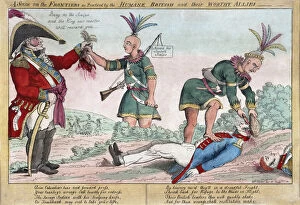Scalping Collection
"Scalping: Unveiling the Brutality of American Indian Warfare" Throughout history, the act has been associated with various aspects
All Professionally Made to Order for Quick Shipping
"Scalping: Unveiling the Brutality of American Indian Warfare" Throughout history, the act has been associated with various aspects, from the gruesome practices of American Indians to tales of robbery and savagery. The image titled "The Savages Let Loose, or the Cruel Fate of the Loyalists, 1783" depicts a haunting scene where American Indians are shown scalping their victims. This engraving serves as a chilling reminder of the brutality that occurred during those times. Another illustration from circa 1900 portrays an Indian scalp soldier, showcasing how this practice was not limited to specific periods but continued for centuries. The colored lithograph titled "Indian Scalpers" further emphasizes this brutal tradition. One cannot ignore the impact these acts had on innocent lives. In "Massacre of Baldwin's Family by the Savages. " - a colored engraving published in 1835 - we witness firsthand how families fell victim to these savage attacks. Similarly, another colored engraving shows Indians attacking a fort, highlighting their relentless nature. The death whoop was often heard echoing through battlefields during conflicts between settlers and Native Americans; it symbolized fear and terror among those facing imminent danger. A lithograph named "Death Whoop, " created in 1853 using vibrant colors, captures this intense moment. While some may argue that British forces were also involved in such practices during warfare against Native Americans and their allies – as depicted in hand-colored etchings like "A scene on the frontiers as practiced by humane British and their worthy allies" – it is important to remember that scalping transcended cultural boundaries. Artworks like "British Warfare in 1812, " published by H. R. Robinson between 1837-38 as a lithograph print, shed light on historical events where scalping played a role regardless of nationality or allegiance. Lastly, let us not forget that behind every warrior, there were individuals who possessed unique skills and techniques.

